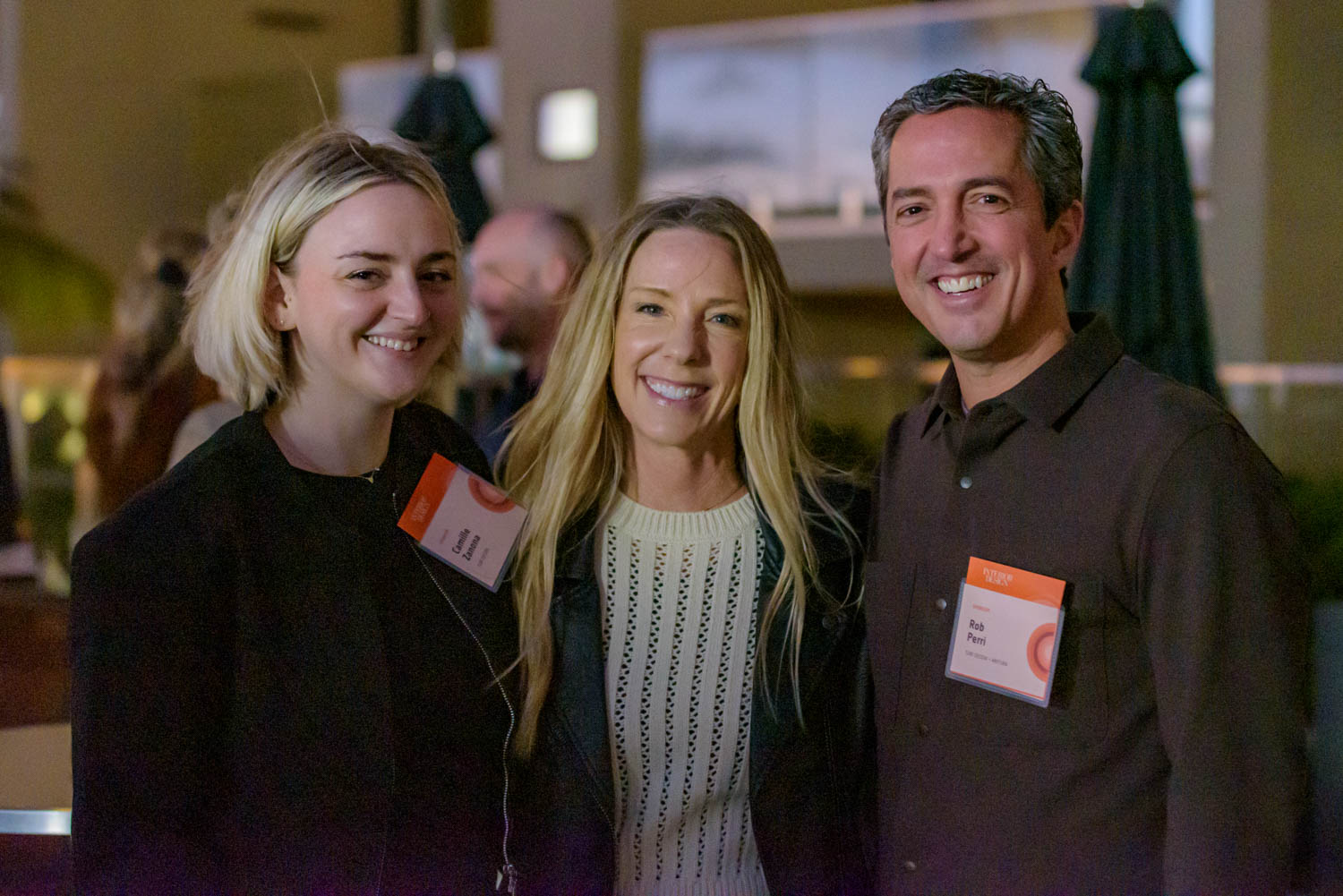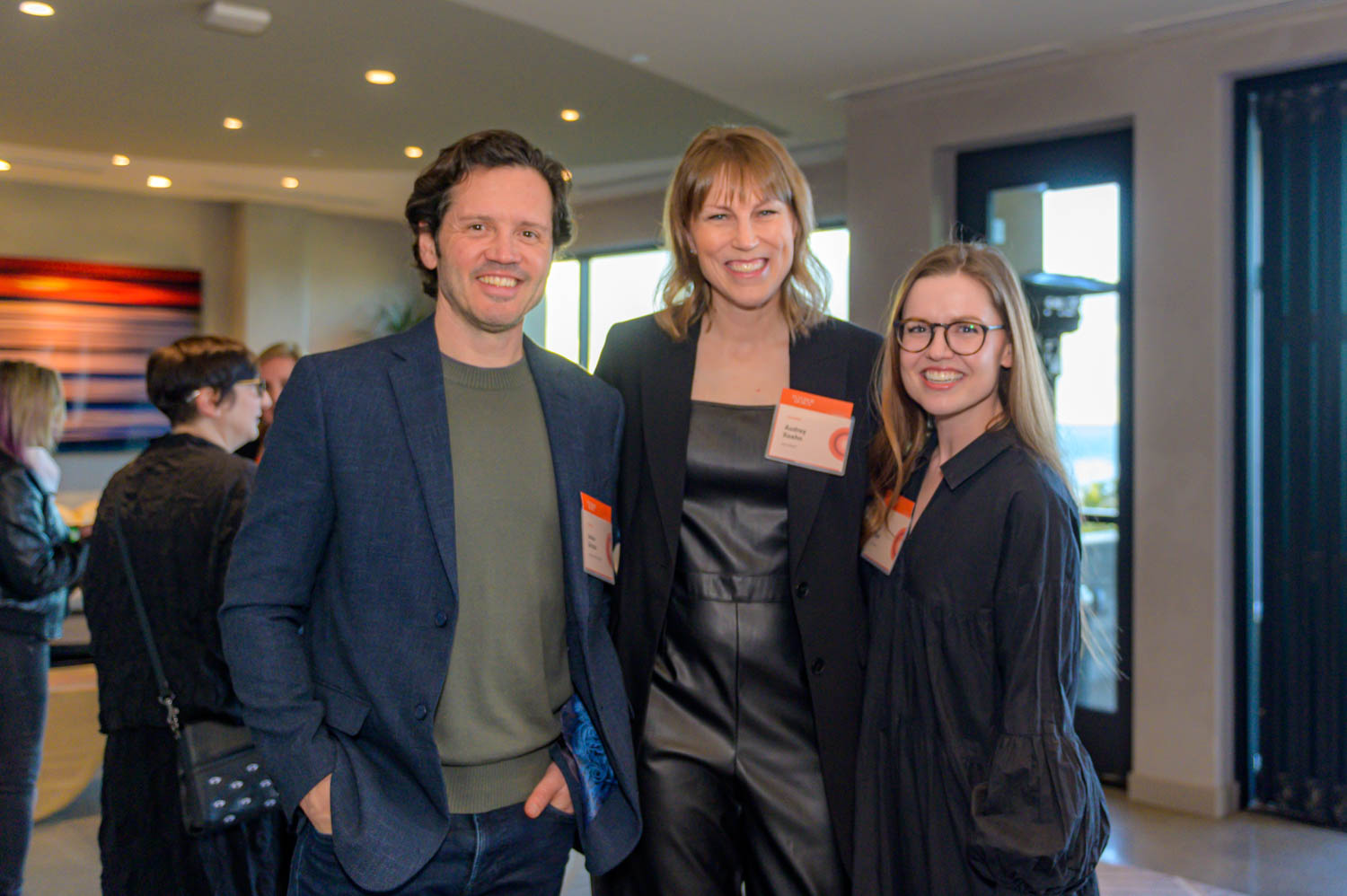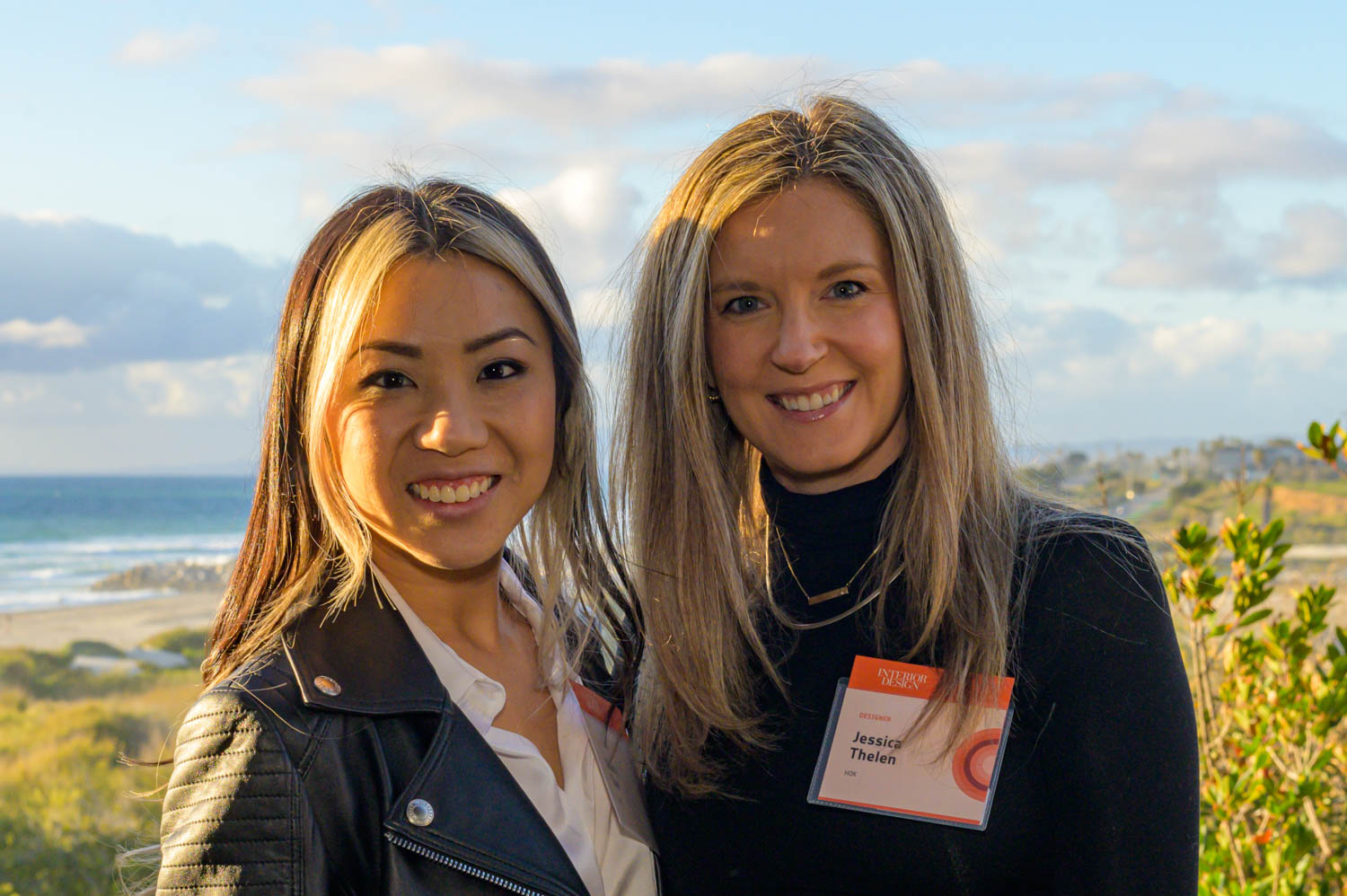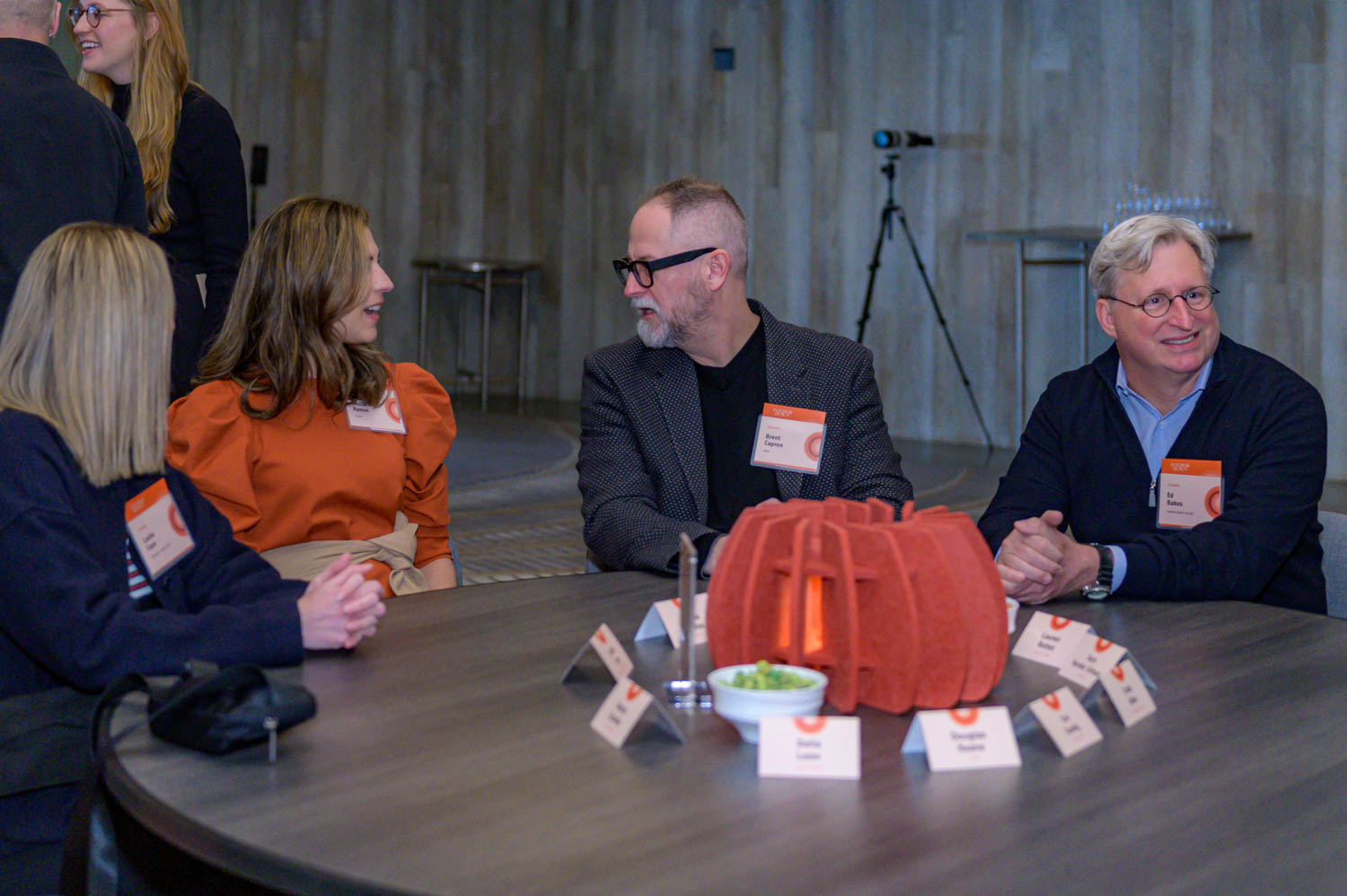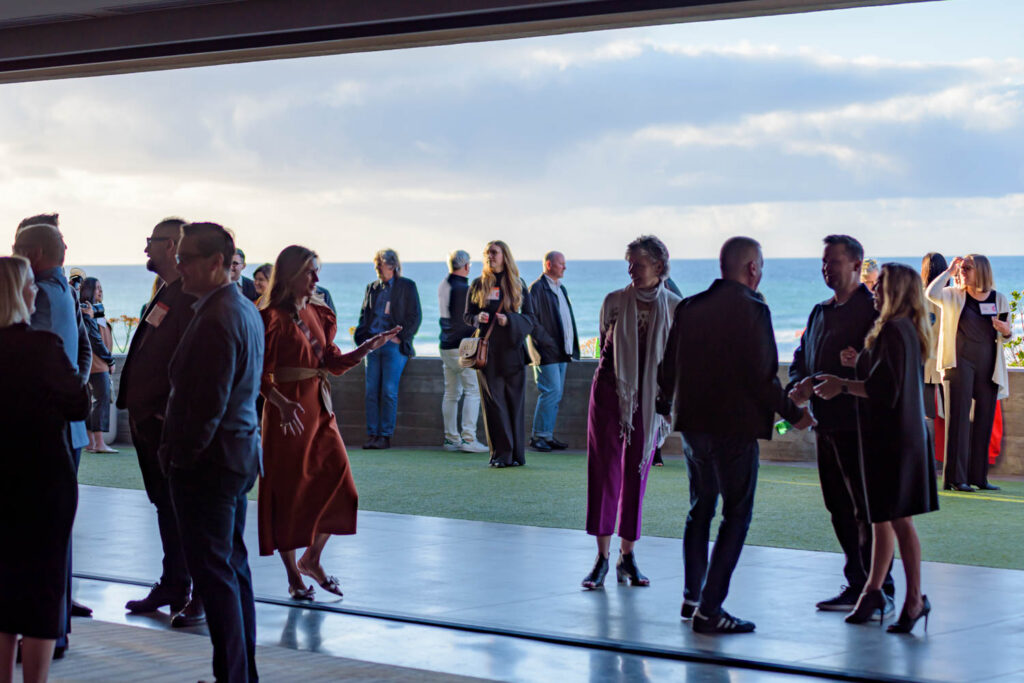
Giants and Rising Talent Attendees Explore How Science Shapes Design
What type of environment optimizes cognitive function? Neuroscience holds insight into this question, and more. As part of a packed schedule during the second day of Interior Design‘s Giants and Rising Talent event, Thomas Albright, professor and director of the Vision Center Library at the Salk Institute for Biological Studies, invited event attendees to examine the inner workings of their brains, noting that what we see is a fragment of what our eyes take in.
Exploring the Role of Ancient Practices and Modern Science on the Built Environment
“Neuroscience takes us to a new level; it offers a new approach to an old problem,” shared Albright, referencing Vedic texts dating back 5,000 years that position architecture as a means to nourish community and create extraordinary experiences. The way people engage with the built environment relies on sensory input and cognition, but what makes some designs pleasing on a nearly universal scale, like Antoni Gaudí’s Sagrada Família in Barcelona, Spain?

Patterns with defined qualities and simplistic configurations, for one. Albright pointed out that mandalas are designed to evoke a sense of calm, which they accomplish by tapping into the innate organizational structure of the human brain, and its immense memory bank. For architects and designers, this means neuroscience holds invaluable clues into how design shapes the human experience. “Architecture is an applied science of biology,” Albright continued, noting that invention and validation are key processes. Bubblegum pink, for example, is a color that’s been found to improve calm and focus in children when tested in elementary school classrooms and, given these findings, has since been applied elsewhere.
Albright made clear visual imagery impacts the body in countless ways, from regulating circadian rhythm to processing information considered essential to survival. “If you don’t know what’s out there, you’re in trouble because it might eat you,” he said, noting the evolution of our sensory processing. The takeaway? Neuroscience—and the visual information we take is—offers a rich well of design solutions.
Watch the Giants and Rising Talent Event Recap
Spotlighting Interior Design’s Giants—and Happiness
But the learning didn’t stop there. Attendees were treated to knowledge gems throughout the March 3-5 event as they moved throughout the Alila Marea Beach Resort in Encinitas, California—and ventured beyond it for a few excursions. After an early morning beach clean-up, during which Giants and Rising Talent attendees cleared 44 pounds of trash (and spotted a few dolphins), Editor-in-Chief Cindy Allen celebrated Interior Design‘s Giants and their growth year-over-year. “Last year, you had $4.9 billion in fees, and you’re at $6.9 billion now,” she said, citing statistics provided by ThinkLab. When it comes to specifying, Giants are at $111 billion up from $90 billion. “You Giants just keep getting more and more powerful,” she said.
Then Nancy O’Brien, cofounder and CEO of Experience Happiness, took to the stage to share tools and tips for enhancing wellbeing and reducing burnout. “Here’s the good news about happiness: It’s not out there, it’s in here,” she said. “It’s an internal state we can cultivate no matter what’s going on.” O’Brian guided attendees through a breath work exercise as well as a visualization, offering an invitation to explore unfamiliar feelings or sensations. “When you are authentically happy from the inside out, you are being the light that the world needs,” she added.
Directly following O’Brien’s talk, cellist Philip Sheppard and movement artist and documentarian, Quentin Robinson, took on the challenge of translating her insights on happiness into a performance piece they created on the spot—a treat for the eyes and ears. Robinson also offered a movement workshop for attendees later in the afternoon.
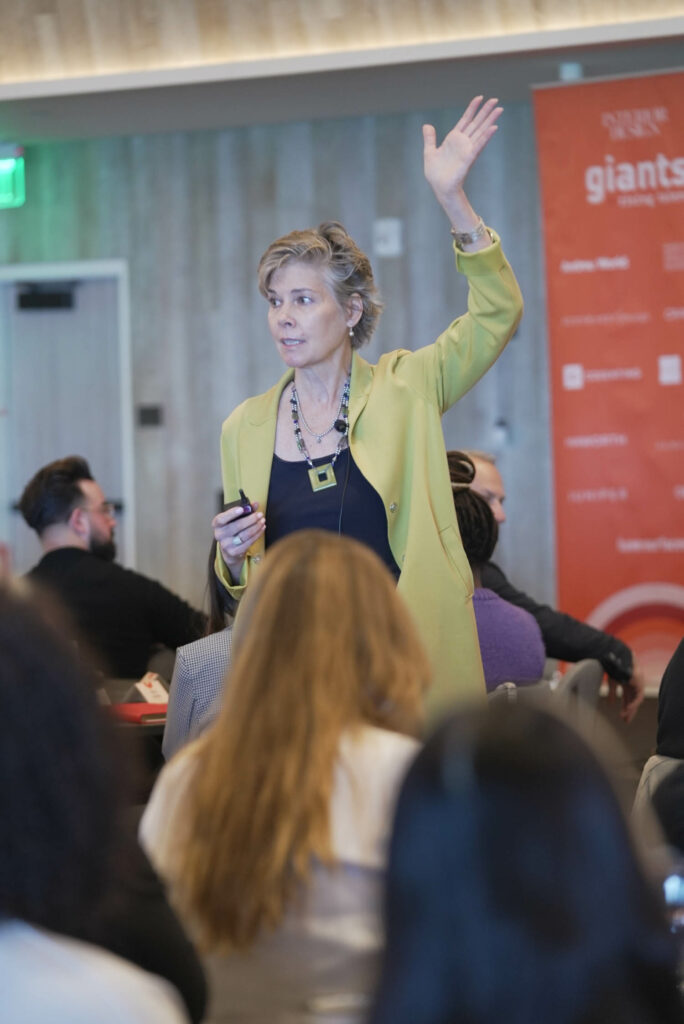

Don’t miss more Giants and Rising Talent highlights. See how Tom Kundig approaches restaurant design, and more.
Tapping into the Power of Meditation with Suzanne Tick
Before attendees decided whether to spend their Monday afternoon exploring movement, yoga and meditation, or the Salk Institute for Biological Studies, Interior Design Hall of Famer and material innovator Suzanne Tick shared the ways her meditation practice continues to shape her creative career. “I knew I needed a fix; I needed to change,” she shared, when Allen asked how she found meditation. At a dark moment in Tick’s life, she looked to the past to find a solution for her future. “I wanted something that was tried and true, that I could really understand how to do,” she added. Vedic Meditation was her answer.
Just as Albright stressed the impact of neuroscience, Tick emphasized the value of examining the body at a glandular level. “The pituitary gland stores a lot of stress—when a computer is too clogged, it slows down,” she said. “When we’re stressed, we become very single-minded and very focused,” she continued, noting the importance of calming the body’s physiology. Since beginning her meditation practice, which consists of a 20 minute morning meditation and a 20 minute evening meditation, Tick has continued her study in India and beyond and now shares her learnings with others.

Day 3 Wraps as ThinkLab Notes Industry Shifts—and How to Prepare
The third and final day of Giants and Rising Talent concluded with an insightful talk by ThinkLab founder and president Amanda Schneider, who touched on how to stay ahead of industry disruptions. Inviting debate, she asked attendees: “Would you rather have change happen so fast that you cant keep up or have things never change?”
From economic uncertainty to rising costs of square footage to clients demanding more services for the same or lower fees, architects and designers are up against significant challenges but, Schneider asserted, challenges also create opportunity. She encouraged attendees to consider how and where to diversify, looking to nontraditional solutions such as consulting projects. ThinkLab’s data also makes clear that a top pain point remains a consistent one—recruiting and retaining qualified staff, which means firms need to view sustainability through a broader lens, thinking through ways to protect employee wellbeing, as well as the environment. One question to consider: How can we use design as a means to prevent burnout?
During Schneider’s presentation, attendees were asked to talk through solutions for challenges ranging from AI to hybrid work to shifts in commercial real estate, inviting a lively debate that’s sure to spark more conversations to come. As Giants and Rising Talent wrapped, attendees said their goodbyes equipped with new knowledge, lasting friendships, and meaningful industry connections. As Allen often says “Wowza!”
Learn what Gen Z has to say about hybrid work and burnout, and take in research-based industry insights, by following ThinkLab’s Design Nerds Anonymous wherever you get your podcasts.
Explore Event Highlights from Interior Design’s 2024 Giants and Rising Talent Event
A very special thank you to our 2024 Giants and Rising Talent event partners: Mannington, Shaw Contract, Lutron, Turf, Cosentino North America, Andreu World America, Bernhardt Design, Craftmade, Material Bank, which offset the estimated carbon footprint for the event, Williams-Sonoma Business to Business, which provided event centerpieces as well as cozy throws for attendees, THE MART, ASID, Stylex, Janus et Cie, Mohawk Group, which sponsored the beach clean-up along with the Rob Machado Foundation, Haworth, Tuuci, HBF Textiles, Juniper, and Tarkett.
read more
DesignWire
Top Product Picks from the 2024 Kitchen & Bath Industry Show
Check out the sizzling, must-see products that have graced the show floor of NKBA’s KBIS 2024, from Barbie pink faucets to sleek gas cooktop ranges.
DesignWire
10 Questions With… Architect and Designer, Victoria Yakusha
Ukrainian architect, designer and artist Victoria Yakusha sheds light on her overall practice and the ongoing challenge of the war in Ukraine.
DesignWire
Giants and Rising Talent Kicks Off With a Talk by Tom Kundig
Tom Kundig, a founder of Olson Kundig, and Douglas Keane, owner Cyrus Restaurant, which the firm designed, kicked off Interior Design’s Giants and Rising Talent event.


